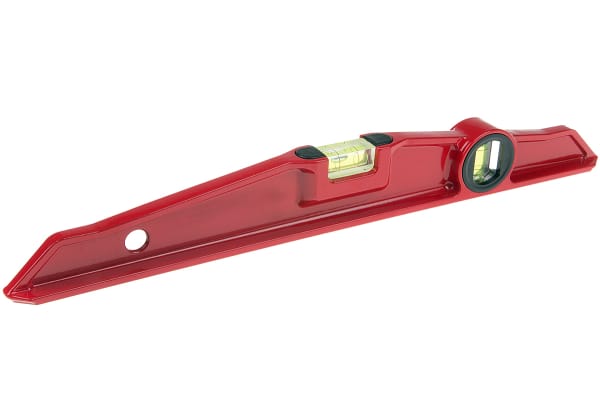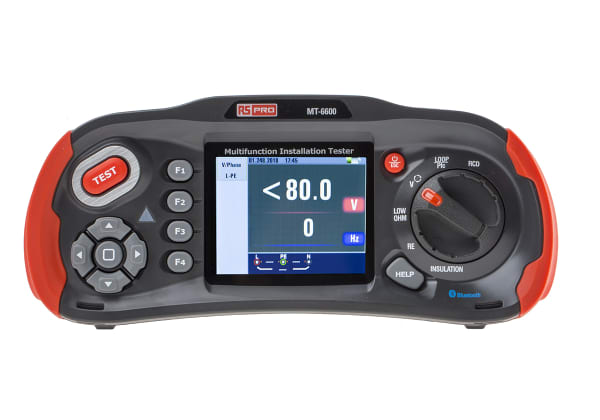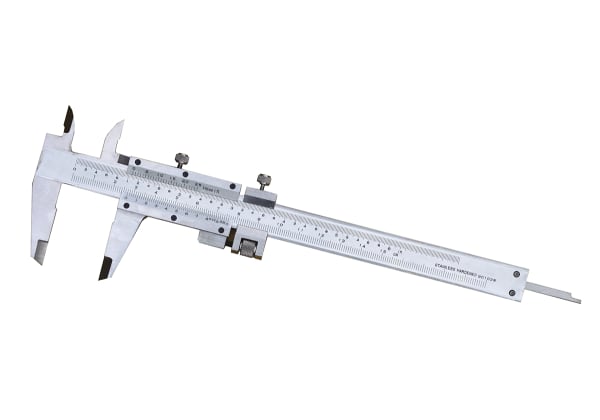- Published 15 Oct 2024
- Last Modified 15 Oct 2024
- 6 min
Guide to Optical Levels
Optical levels are used in surveying, construction, and building work to verify levels on a horizontal plane. This guide explains types of optical levels, what they do, and some of their common applications.
Reviewed by David Carmichael, Solution Engineer (October 2024)
An optical level – also known as a builder’s level, surveyor’s level, or dumpy level – is an optical instrument for measuring the height or levels of objects or marks on the same horizontal plane. Optical levels commonly come up in surveying and construction. They can be used for levelling and settlement determinations and in establishing the correct height of railways, pipelines, and roads. Optical levels are also used to accurately level machinery on the shopfloor.
Read this guide to find out more about optical levels, how they work, and the best optical level for your application.
What is an Optical Level Instrument?
What is an optical level? Used in conjunction with a levelling staff, optical levels verify points to establish the height or levels of objects or marks.
Optical levels consist of a telescope that enables the user to take a measurement, an inbuilt level, and a tripod. Optical level telescopes, which operate over 360° on the horizontal plane, feature a wide range of magnification strengths but are typically between 24x and 28x. The more the magnification, the easier it is to take measurements, but the field of view is smaller, and vice versa.
Optical levels are used outside so they need to be robust and practical. Handheld versions of optical levels are also available for quick scans. It’s important that the optical level is itself perfectly level before use. Some modern optical levels self-compensate (auto-level) if the level is not quite horizontal. These optical levels adjust for minor deviations in set-up, helping save the surveyor time on the job.
How do optical levels work? And what are the basics when it comes to how to use an optical level? The builder, constructor, or surveyor sets up the optical level on a tripod. A colleague then holds a levelling staff (essentially a huge ruler graduated in inches or centimetres) at the bottom of the point from which levelling measurements must be made. The builder rotates the telescope until he or she can site the staff in the crosshairs of the telescope to take the measurement.
Optical Level Types
There are a number of different types of optical level. The oldest is the wye level, or ‘Y level,’ a bulky device that was invented in 1740 by Jonathan Sisson, an English inventor and instrument maker. This was superseded by the original dumpy level, developed by William Gavatt in 1830. The new technology was known as ‘dumpy’ because its telescope was short and fat. Despite evolutions in the design, the name persists to this day.
Dumpy Level
We’ve heard why it got its name, but what is a dumpy level? Today’s dumpy level (also often referred to as a ‘builder’s level’) is a common type of optical level instrument for taking measurements on the levelling staff. A dumpy level includes an eyepiece with a focus adjustment to focus on the staff. The dumpy level will also include a spirit level for horizontal alignment.
When you consider how to use a dumpy level, it’s crucial it is set up to be perfectly horizontal, which enables accurate measurements. The dumpy level is attached to an adjustable tripod. The tripod should be adjusted so that it provides a solid, level platform for the surveyor or builder.
Automatic Level
And just what is an automatic level? Automatic optical levels (sometimes called a ‘builder’s auto level’) feature a mechanism that reduces variation in the set-up of the level so that even if the optical level is not perfectly horizontal, it will still give accurate measurements. The horizontal plane is established by a system of optical prisms and mirrors supported by wires (a bit like a pendulum). Builders and surveyors often favour automatic levels because of their speed to set up and use.
Tilting Level
A tilting level is a modified dumpy level where the telescope is not fixed. Rather, the telescope can be vertically tilted.
A tilting level features a rotating knob. When the knob is rotated, the end of the telescope goes up or down, which changes the line of sight without having to adjust the tripod. The tilting level features two bubbles (known as a ‘split bubble’ design): one to level the instrument and another bubble to level the telescope. The split bubble means the surveyor is not entirely reliant on the accuracy of the levelling of the tripod, with the telescope’s bubble also helping to ensure it is level.
Optical Level Uses
Optical level applications include construction, the building trade, and surveying. Let’s look at some of those optical level uses in more detail.
Building and Optical Levels
Builders and construction companies use optical levels to determine the height of objects or marks onsite. This helps ensure that the final design is true to the plan. As well as being used on building and construction sites, the optical level is used by gardeners for landscaping.
Surveying and Optical Levels
Levelling is a process for measuring and marking elevation on a landscape or in the built environment, so for a surveyor, it’s a crucial part of the job. Optical levels are used by surveyors for this purpose. Much like a surveyor, farmers also use optical levels to measure points of elevation on their land.
Optical Level Features
Optical instruments come in a range of magnifications, while some designs are particularly ruggedised and robust for tough environments. Other optical levels feature easy-to-read displays or weather resistance. Automatic levels are renowned for being easier and quicker to set up, which is great when time is of the essence on a construction site. And the most durable optical levels will be good for everything from dusty, dirty sites to levelling production machinery at a manufacturer.
With so many types of optical level on the market, including the tried and tested dumpy level, tilting and automatic designs, and many others, you’re bound to be able to find the right optical level for your application.
Did you know that as well as dumpy levels, RS carries a wide range of displays and optoelectronics? Explore the products we offer today.
Related Articles
Related links
- Optical Levels
- Bosch 0601068400 Optical Level IP54, GOL 20 D
- DeWALT DW096PK-XJ Optical Level DW096PK-XJ
- Bosch 061599404P Optical Level IP54, GOL20G + BT160 + GR500
- Bosch 061599404R Optical Level IP54, GOL 20 D + BT 160+GR 500
- Level Sensors
- Guide to Conductivity Meters
- Stanley Telescopic Pole For Use With Multiline and Optical Levels, Rotary Laser



